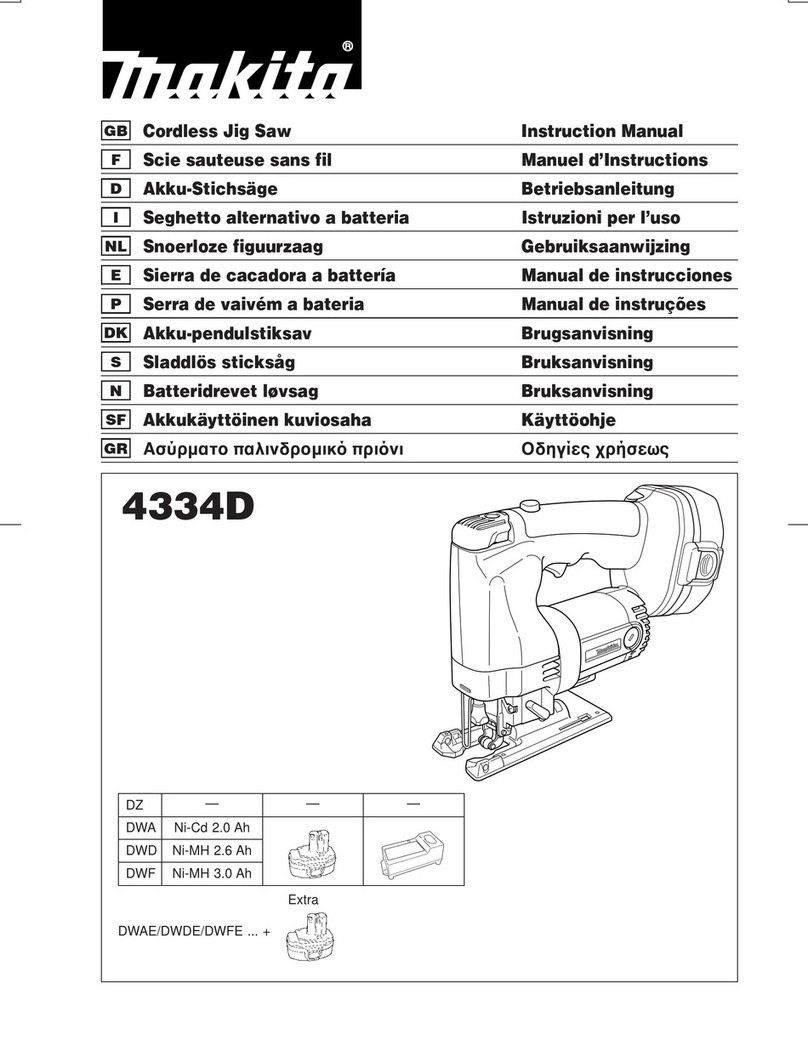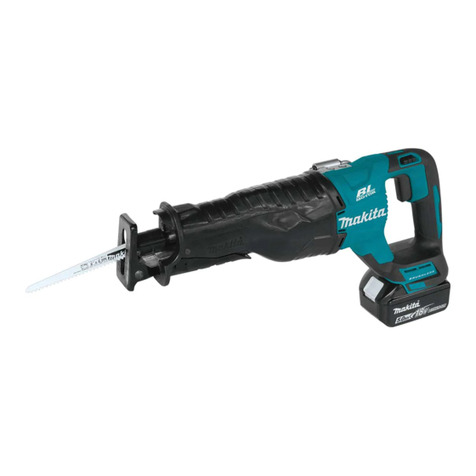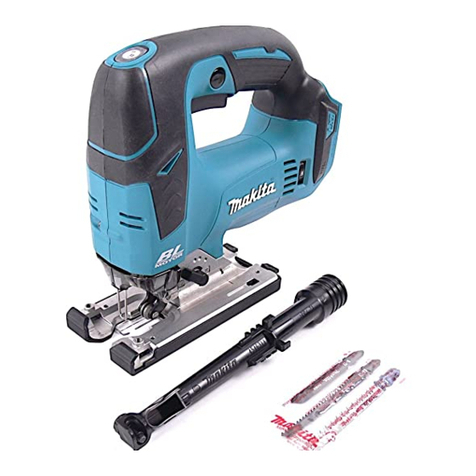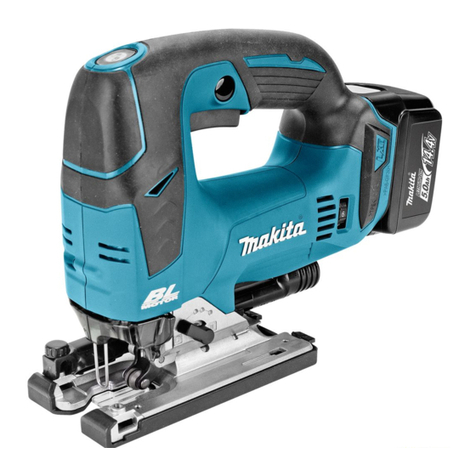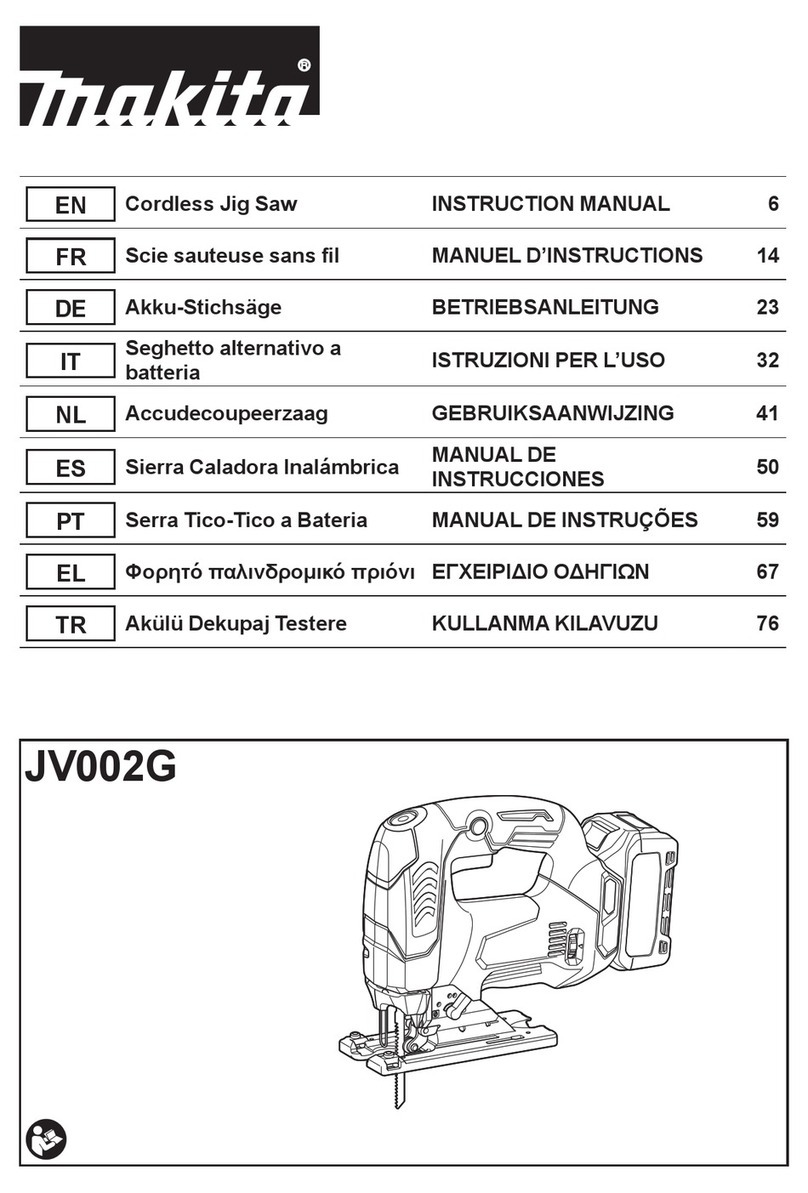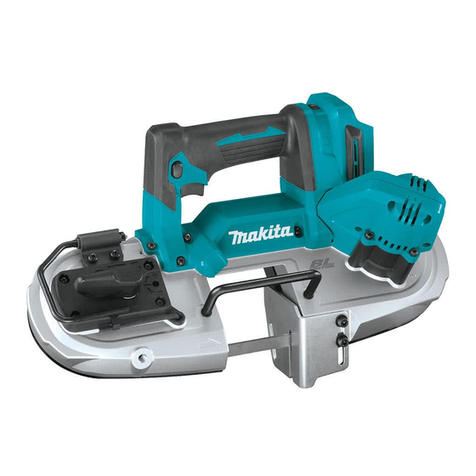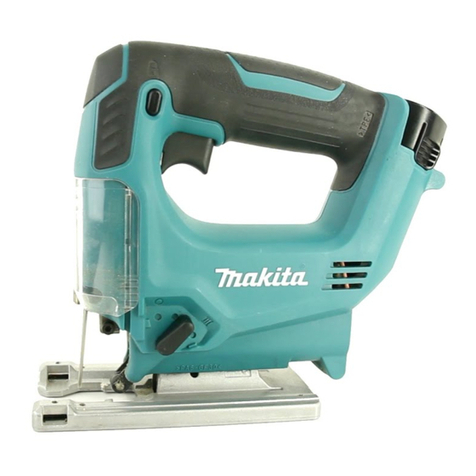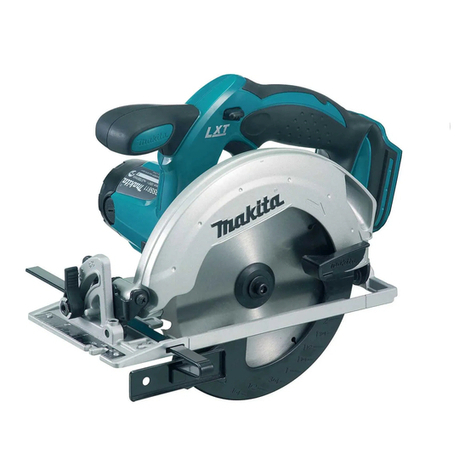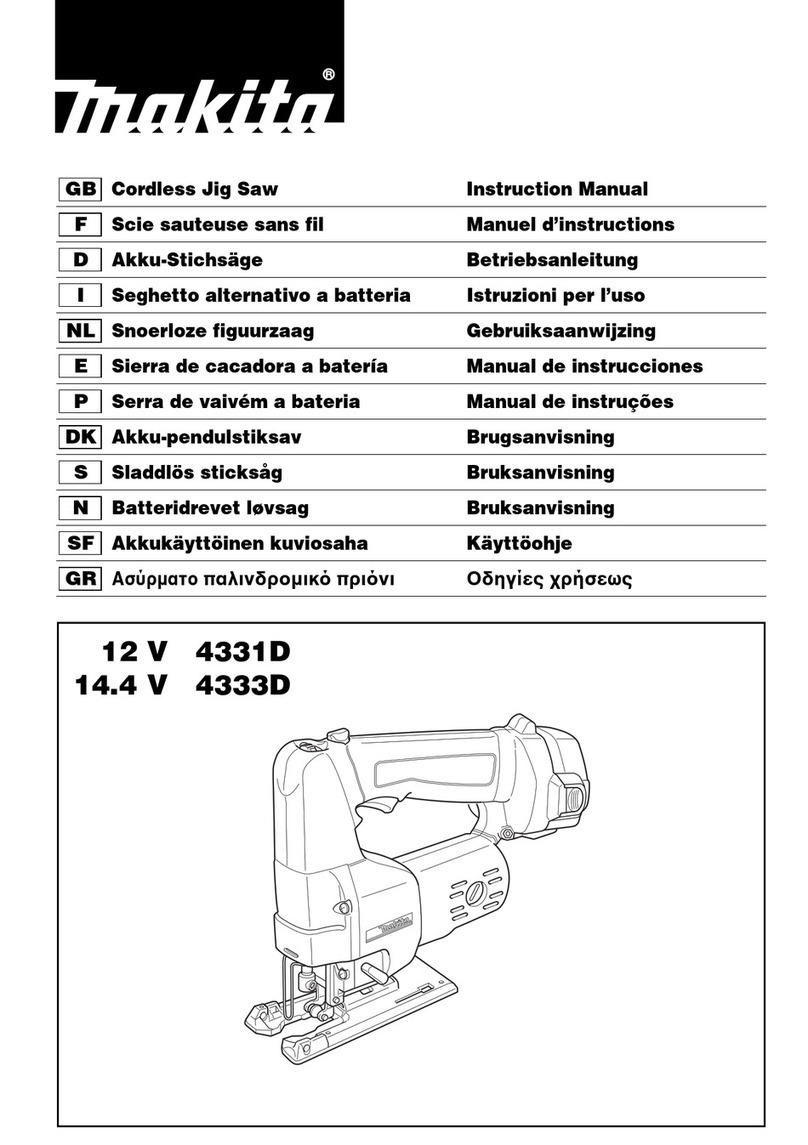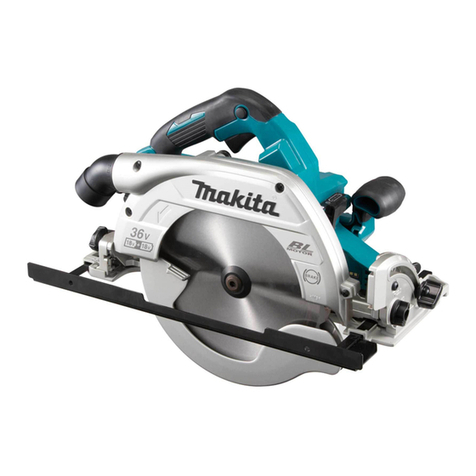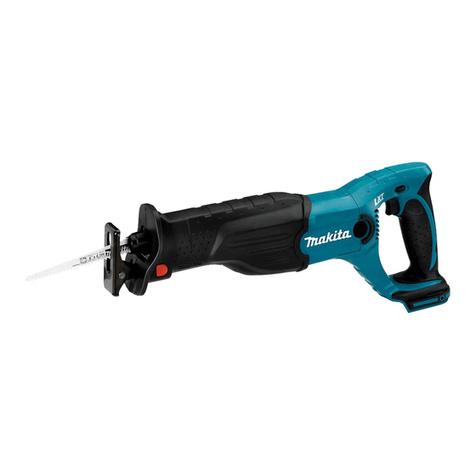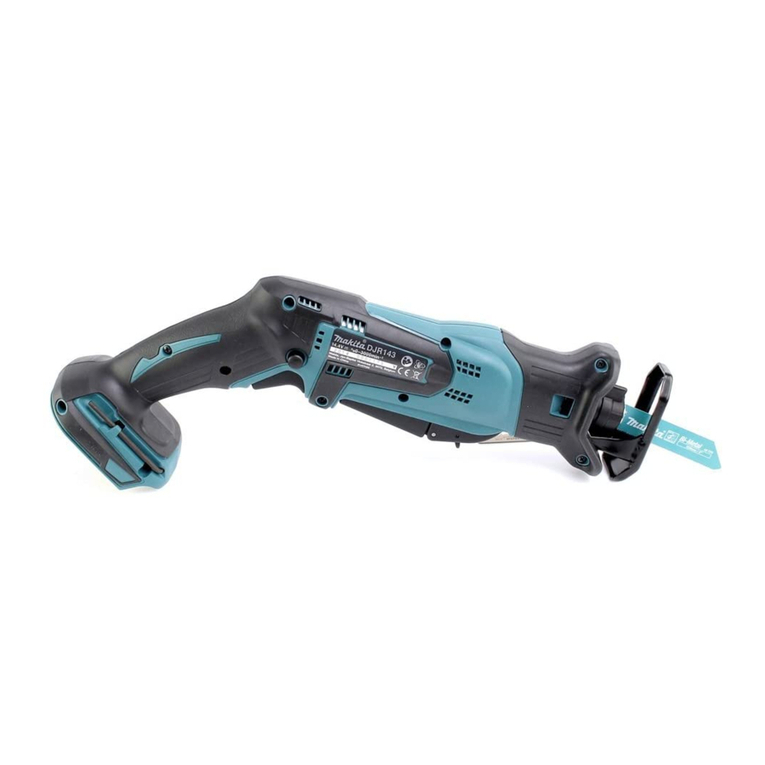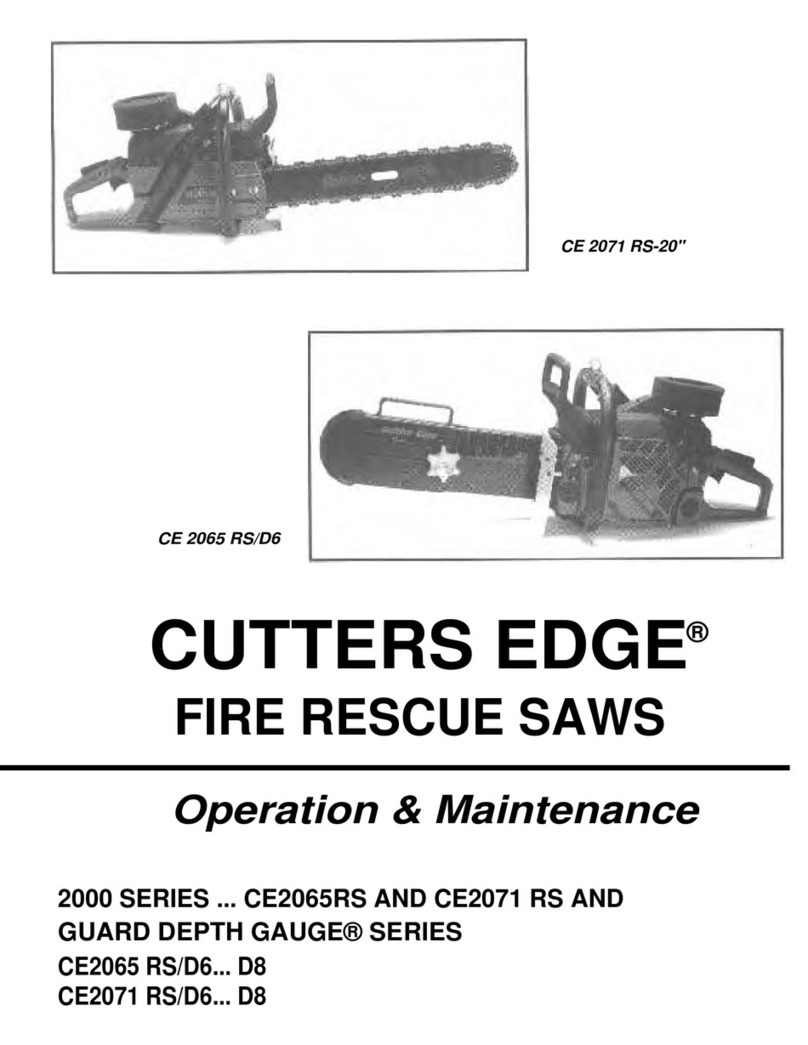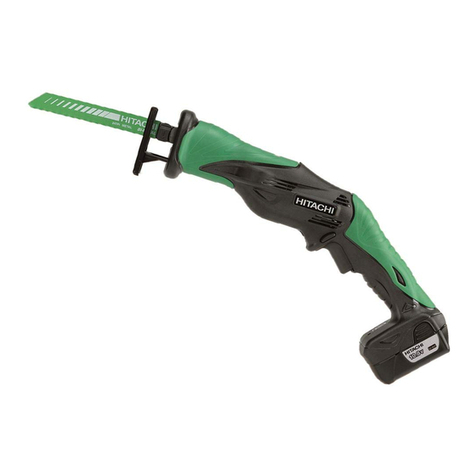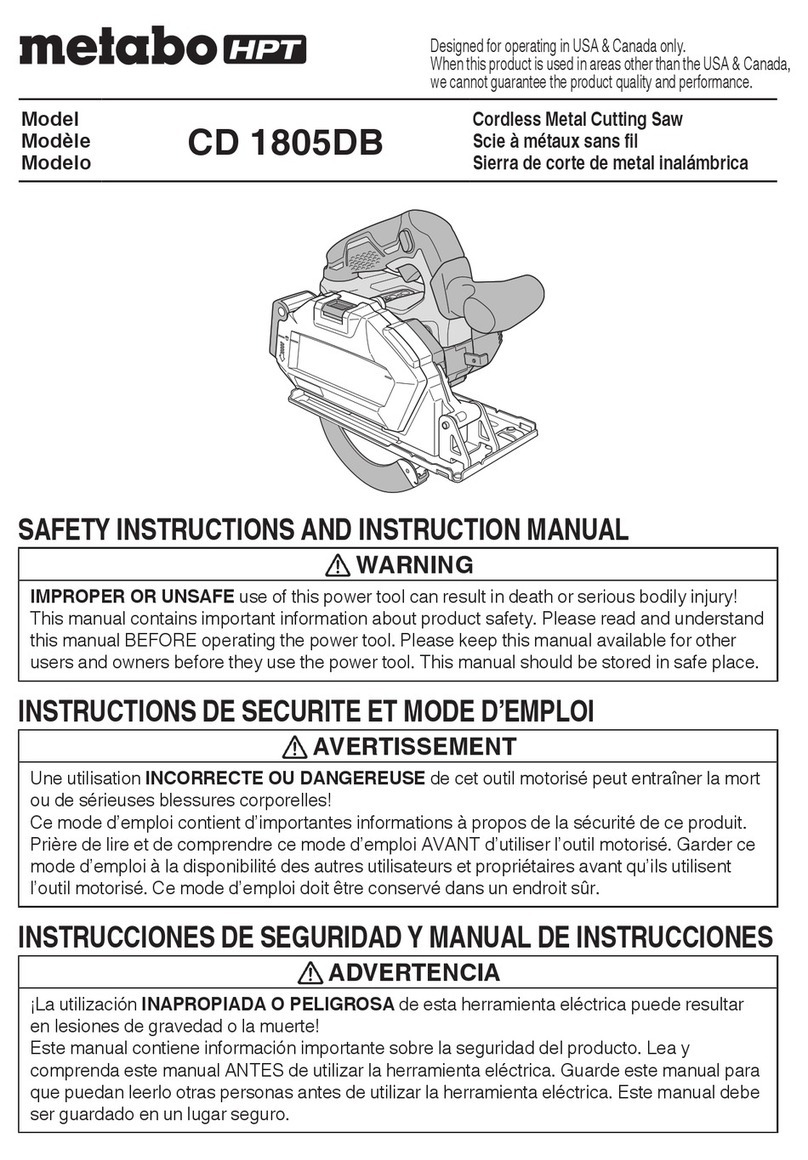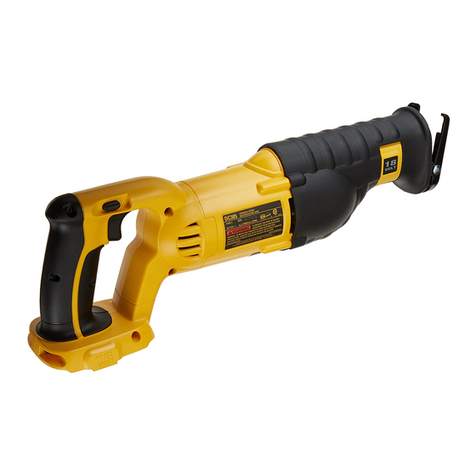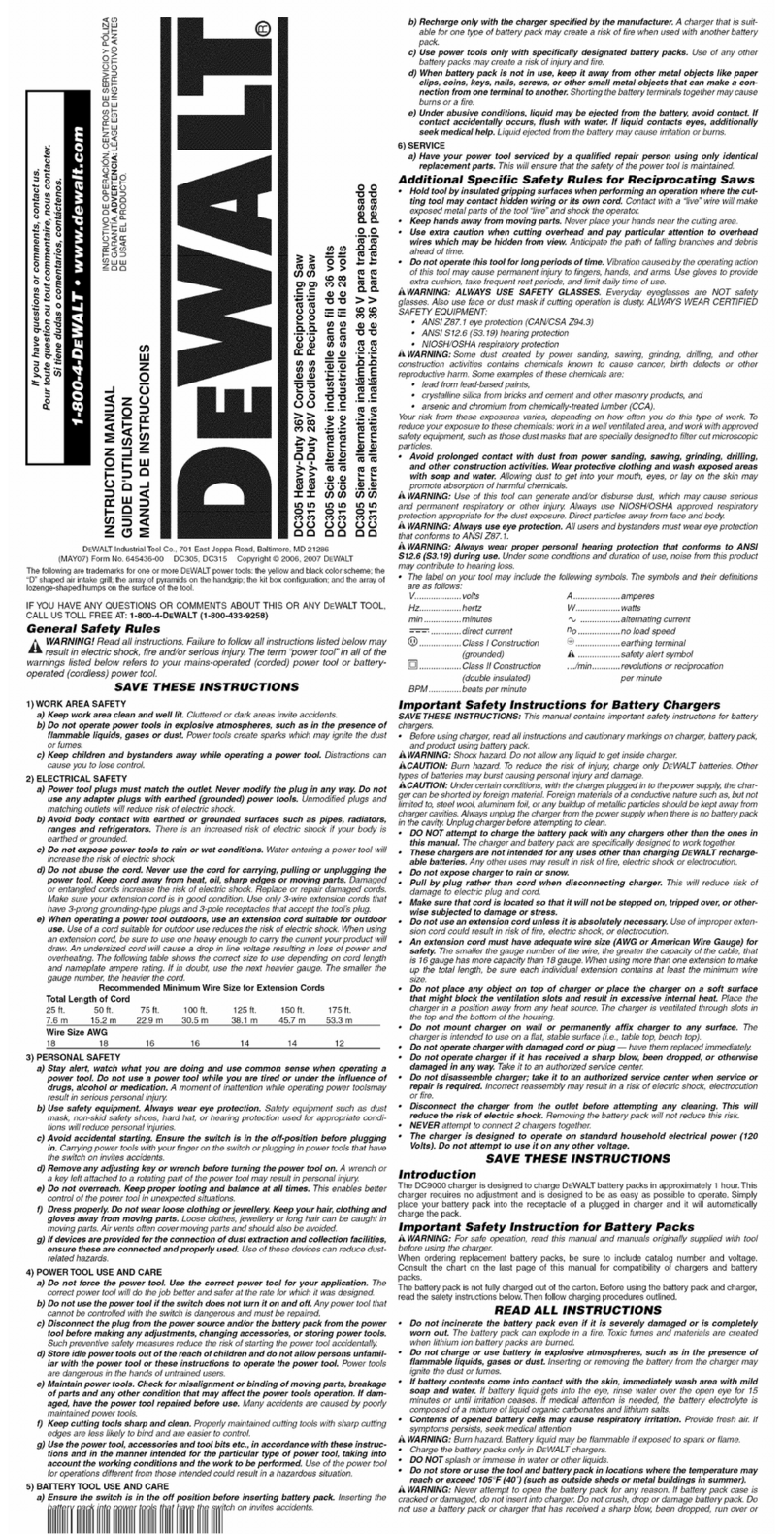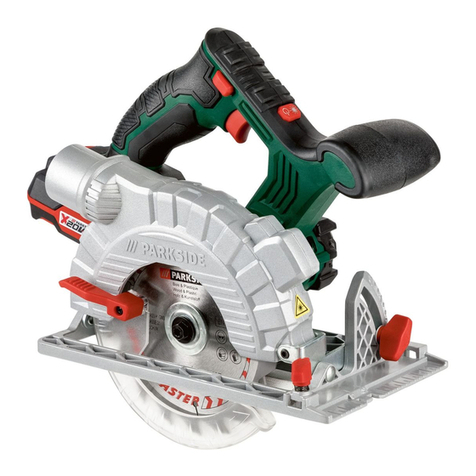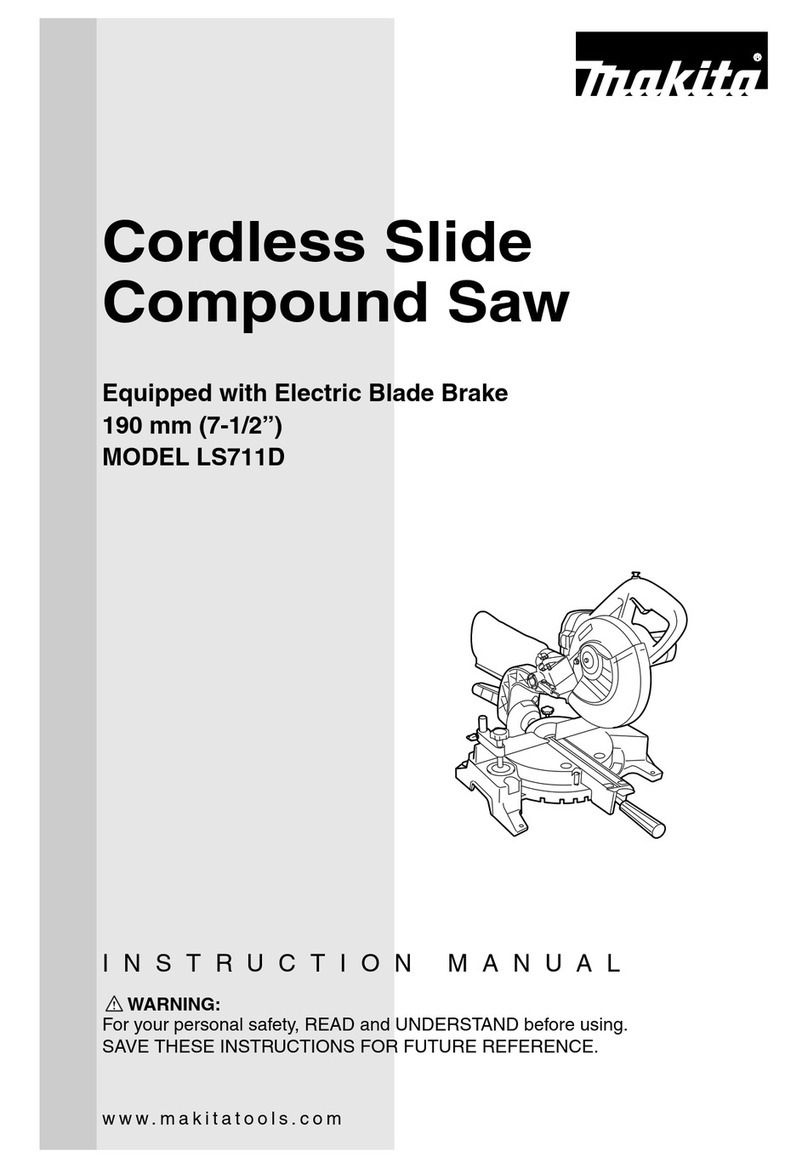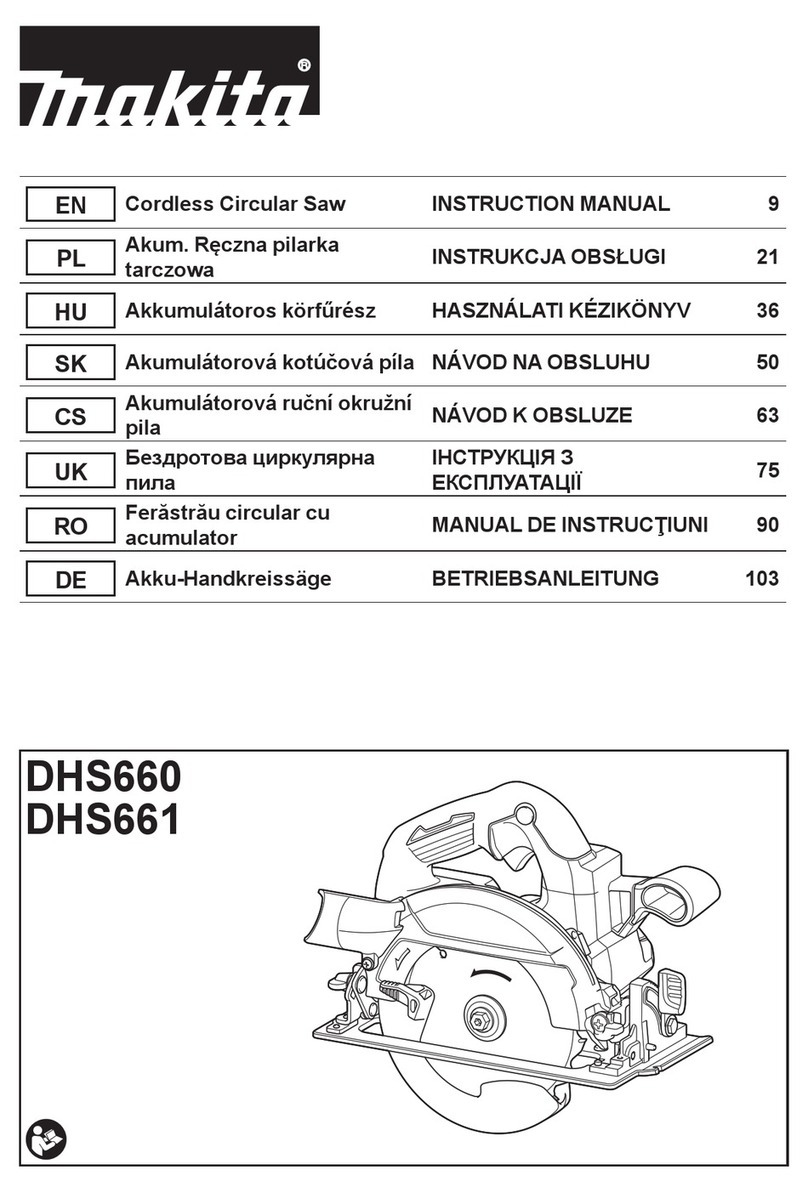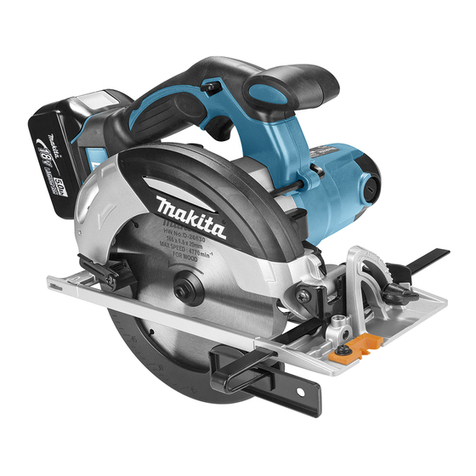
7ENGLISH
General power tool safety warnings
WARNING: Read all safety warnings, instruc-
tions, illustrations and specications provided
with this power tool.Failuretofollowallinstructions
listedbelowmayresultinelectricshock,reand/or
seriousinjury.
Save all warnings and instruc-
tions for future reference.
Theterm"powertool"inthewarningsreferstoyour
mains-operated(corded)powertoolorbattery-operated
(cordless)powertool.
Cordless circular saw safety
warnings
Cutting procedures
1. DANGER: Keep hands away from cutting
area and the blade. Keep your second hand
on auxiliary handle, or motor housing.Ifboth
handsareholdingthesaw,theycannotbecutby
theblade.
2. Do not reach underneath the workpiece.The
guardcannotprotectyoufromthebladebelowthe
workpiece.
3. Adjust the cutting depth to the thickness of
the workpiece.Lessthanafulltoothoftheblade
teethshouldbevisiblebelowtheworkpiece.
4. Never hold the workpiece in your hands or
across your leg while cutting. Secure the
workpiece to a stable platform. It is important to
supporttheworkproperlytominimisebodyexpo-
sure,bladebinding,orlossofcontrol.
►Fig.1
5. Hold the power tool by insulated gripping
surfaces, when performing an operation where
the cutting tool may contact hidden wiring or
its own cord.Contactwitha"live"wirewillalso
makeexposedmetalpartsofthepowertool"live"
andcouldgivetheoperatoranelectricshock.
6. When ripping, always use a rip fence or
straight edge guide.Thisimprovestheaccuracy
ofcutandreducesthechanceofbladebinding.
7. Always use blades with correct size and shape
(diamond versus round) of arbour holes.
Bladesthatdonotmatchthemountinghardware
ofthesawwillrunoff-centre,causinglossof
control.
8. Never use damaged or incorrect blade wash-
ers or bolt.Thebladewashersandboltwere
speciallydesignedforyoursaw,foroptimum
performanceandsafetyofoperation.
Kickback causes and related warnings
— kickbackisasuddenreactiontoapinched,
jammedormisalignedsawblade,causingan
uncontrolledsawtoliftupandoutoftheworkpiece
toward the operator;
— whenthebladeispinchedorjammedtightlybythe
kerfclosingdown,thebladestallsandthemotor
reactiondrivestheunitrapidlybacktowardthe
operator;
— ifthebladebecomestwistedormisalignedinthe
cut,theteethatthebackedgeofthebladecandig
intothetopsurfaceofthewoodcausingtheblade
toclimboutofthekerfandjumpbacktowardthe
operator.
Kickbackistheresultofsawmisuseand/orincorrect
operatingproceduresorconditionsandcanbeavoided
bytakingproperprecautionsasgivenbelow.
1. Maintain a rm grip with both hands on the
saw and position your arms to resist kickback
forces. Position your body to either side of the
blade, but not in line with the blade.Kickback
couldcausethesawtojumpbackwards,but
kickbackforcescanbecontrolledbytheoperator,
ifproperprecautionsaretaken.
2. When blade is binding, or when interrupting a
cut for any reason, release the trigger and hold
the saw motionless in the material until the
blade comes to a complete stop. Never attempt
to remove the saw from the work or pull the
saw backward while the blade is in motion
or kickback may occur. Investigate and take
correctiveactionstoeliminatethecauseofblade
binding.
3. When restarting a saw in the workpiece, centre
the saw blade in the kerf so that the saw teeth
are not engaged into the material.Ifasawblade
binds,itmaywalkuporkickbackfromthework-
pieceasthesawisrestarted.
4. Support large panels to minimise the risk of
blade pinching and kickback. Large panels tend
tosagundertheirownweight.Supportsmustbe
placedunderthepanelonbothsides,neartheline
ofcutandneartheedgeofthepanel.
►Fig.2
►Fig.3
5. Do not use dull or damaged blades.
Unsharpenedorimproperlysetbladesproduce
narrowkerfcausingexcessivefriction,blade
bindingandkickback.
6. Blade depth and bevel adjusting locking levers
must be tight and secure before making the
cut.Ifbladeadjustmentshiftswhilecutting,itmay
causebindingandkickback.
7. Use extra caution when sawing into existing
walls or other blind areas.Theprotrudingblade
maycutobjectsthatcancausekickback.
8. ALWAYS hold the tool rmly with both hands.
NEVER place your hand, leg or any part of your
body under the tool base or behind the saw,
especially when making cross-cuts.Ifkickback
occurs,thesawcouldeasilyjumpbackwardsover
yourhand,leadingtoseriouspersonalinjury.
►Fig.4
9. Never force the saw. Push the saw forward at a
speed so that the blade cuts without slowing.
Forcingthesawcancauseunevencuts,lossof
accuracy,andpossiblekickback.
